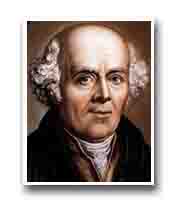Viburnum Opulus. Viburnum opulus. High Cranberry Bush. Cramp Bark. Water Elder. (The Gueldres Rose, or Snowball-tree of our gardens, is the cultivated and sterile variety.) N. O. Caprifoliaceae. Tincture of Read more…
Category: Materia Medica by John Henry Clarke
Vespa.
Vespa. VESPA VULGARIS, the Wasp; VESPA CRABRO, the European Hornet; and VESPA MACULATA, “Yellow-jacket,” the American Hornet. N. O. Hymenoptera (Sub-order Vespidae). Tincture of the living insects. Clinical.-Abscesses, multiple. Read more…
Vesicaria.
Vesicaria. Vesicaria communis. N. O. Cruciferae (Tribe, Alyssineae). Tincture of whole fresh plant. Clinical.-Albuminuria. Cystitis. Dropsy. Gleet. Gonorrhoea. Gravel. Haematuria. Nephralgia. Prostatitis. Characteristics.-Vesicaria is a “genus of Cruciferae, Read more…
Verbena Hastata.
Verbena Hastata. Verbena hastata. Ironweed. N. O. Verbenacae. Tincture of entire fresh plant. Clinical.-Ague; chronic. Epilepsy. Rhus poisoning. Characteristics.-According to Hale Verbena h. grows profusely on the prairies Read more…
Verbascum.
Verbascum. Verbascum thapsus. Great Mullein. N. O. Scrophulariaceae. Tincture of fresh plant at the commencement of flowering. [“Mullein Oil” is prepared by placing the crushed yellow blossoms in a bottle, Read more…
Veratrum Viride.
Veratrum Viride. Veratrum viride. American White Hellebore. Indian Poke. N. O. Melanthaceae (of the Liliaceae). Tincture of fresh root gathered in autumn. [Burt proved Squibb’s liquid extract and says he Read more…
Veratrum Nigrum.
Veratrum Nigrum. Veratrum nigrum. Dark-flowered Veratrum. N. O. Melanthaceae. Tincture of fresh leaves and succulent flower-stalks. Clinical.-Headache. Menstruation, protracted. Tinnitus aurium. Characteristics.-Cooper has given me a few observations Read more…


